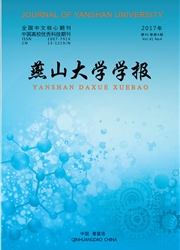

 中文摘要:
中文摘要:
研究发现在微弧氧化过程中引入超声波作用能够提高陶瓷层生长速率和质量。本文通过在微弧氧化过程的不同阶段引入超声波作用,将超声波引入时间细化,来研究超声波对不同时期微弧氧化的作用。利用XRD、SEM以及电化学分析等方法对陶瓷层断面形貌、元素含量分布、相组成、表面形貌和耐蚀性进行了分析,结果表明超声波对微弧氧化各阶段都有影响。超声波的引入促进陶瓷层厚度的增加,尤其是在后期引入超声波,厚度增加最大;前期引入超声波,陶瓷层内γ-A12O3含量增加,Si、P元素含量最高,陶瓷层质量最好,耐蚀性能也最好;后期引入超声波陶瓷层内α-A12O2相含量最高。
 英文摘要:
英文摘要:
The introduction of ultrasonic treatment on the micro-arc oxidation process is proven to effectively increase the growth rate and quality of the ceramic coatings. In this paper, the ultrasonic treatment is introduced in three stages of the micro-arc oxidation processes by controlling the introduction time of ultrasonic treatment. The cross-section morphologies, element content, phase structure, surface micro-structure and corrosion resistance of micro-arc oxidation coatings are examined by X-ray diffraction, scan- ning electron microscopy and potentiodynamic polarization, respectively. The results suggest that the ultrasonic treatment has effect on the three stages of micro-arc oxidation process. The thickness of ceramic coatings increases, in particular, the effect gets more pronounced in the later stage. When ultrasonic processing is introduced in the early stage, the content of γ-A1203 in the coating in- creases, while the content of Si and P are the highest, greatly enhancing the corrosion resistance. Theα-A1203 is dominant when ultrasonic processing is introduced in the later stage.
 同期刊论文项目
同期刊论文项目
 同项目期刊论文
同项目期刊论文
 Microstructure and corrosion behavior of micro-arc oxidation coating on 6061 aluminum alloy pre-trea
Microstructure and corrosion behavior of micro-arc oxidation coating on 6061 aluminum alloy pre-trea Effect of high temperature oxidation prefab film on formation of micro-arc oxidation coatings on 606
Effect of high temperature oxidation prefab film on formation of micro-arc oxidation coatings on 606 An investigation of (NaPO 3 ) 6 effects and mechanisms during micro-arcoxidation of AZ31 magnesium a
An investigation of (NaPO 3 ) 6 effects and mechanisms during micro-arcoxidation of AZ31 magnesium a Effect of ultrasonic on microstructure and growth characteristics of micro-arc oxidation ceramic coa
Effect of ultrasonic on microstructure and growth characteristics of micro-arc oxidation ceramic coa TEM analysis and corrosion resistance of the ceramic coatings in Q235 steel prepared by hybrid metho
TEM analysis and corrosion resistance of the ceramic coatings in Q235 steel prepared by hybrid metho 期刊信息
期刊信息
